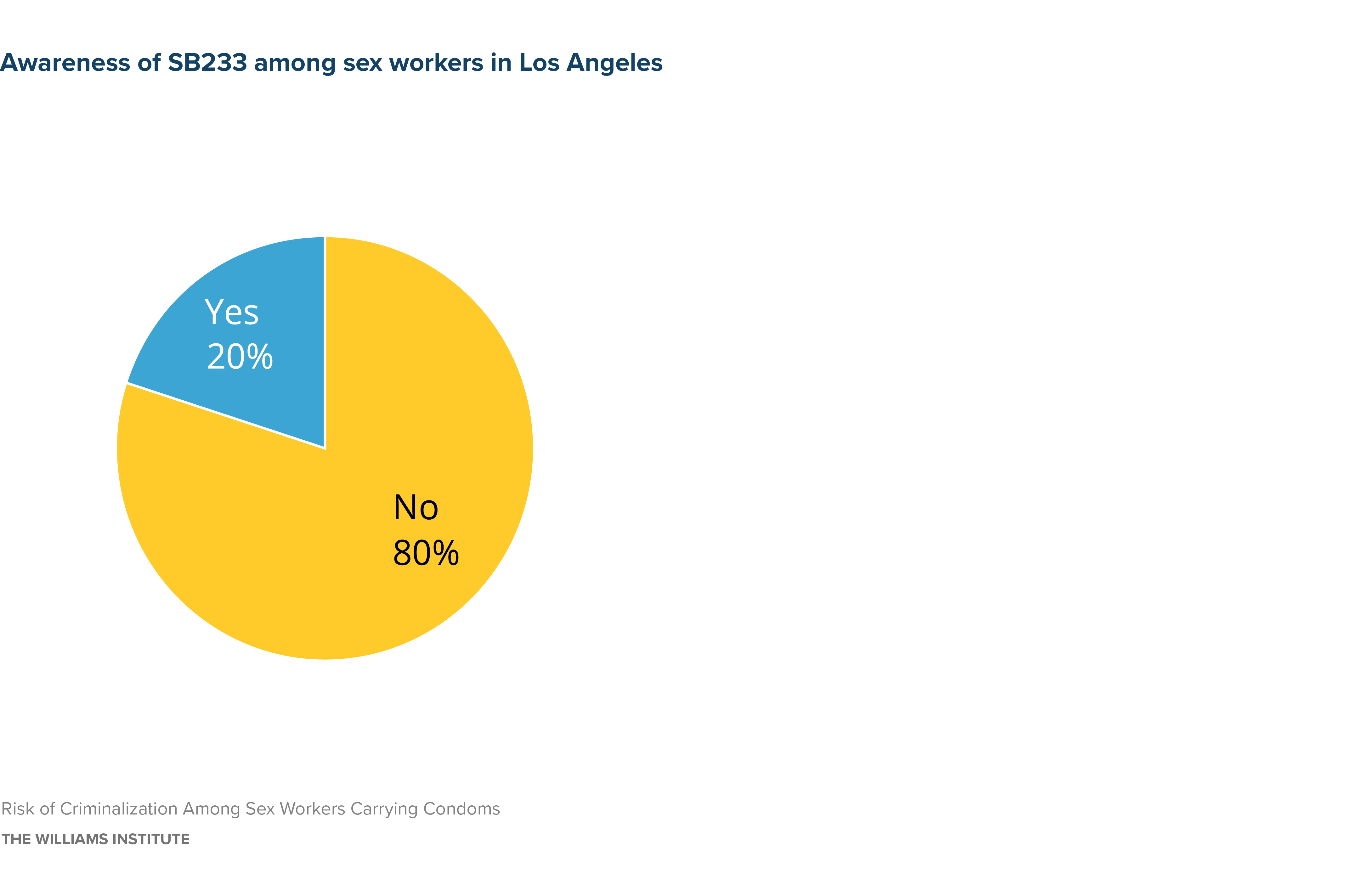Executive Summary
People who engage in sex work (PESW) are particularly vulnerable to criminalization even when seeking to report experiencing victimization. The health and safety of those engaged in sex work is further jeopardized as condoms have been historically used as evidence of sex work. California Senate Bill (SB) 233, taking effect on January 1, 2020, was meant to ensure that condoms cannot be used as probable cause for arrest nor used as evidence to prosecute a person for sex work. Nearly two years after its passage, we conducted interviews with twenty-five diverse individuals with experience engaging in sex work in Los Angeles County, a known locus for enforcement of a prior HIV felony solicitation. We sought to explore respondents’ interactions with law enforcement, their knowledge, beliefs, and experiences with the use of condoms as evidence of sex work, and their beliefs about criminalization risk and how that might impact condom possession and condom use in the context of their work. Through a group thematic review and individual coding (or categorizing) process, we identified the below key findings:
- Respondents shared their perceptions about the risks of criminalization related to condoms in several ways. Some had detailed knowledge about rules and policies related to condom carrying and others had a general awareness of the possible risk of carrying condoms.
- Respondents discussed that the information they received about criminalization regarding condom possession came primarily from other PESW.
- Respondents discussed approaches to mitigating risk of police surveillance by either not carrying condoms at all and/or managing condom carrying through concealing techniques.
- Some respondents who carried condoms, whether they tried to conceal them or not, discussed reasons for doing so, including resisting police control and reducing risk to protect their health, the health of their clients, and/or the health of their community and colleagues in sex work.
- Generally, most respondents (80%) had not heard of any new law that restricted the use of condoms as evidence (SB 233). Further, reflecting the lack of awareness of the new law, condom-carrying behaviors seemed relatively unchanged.
